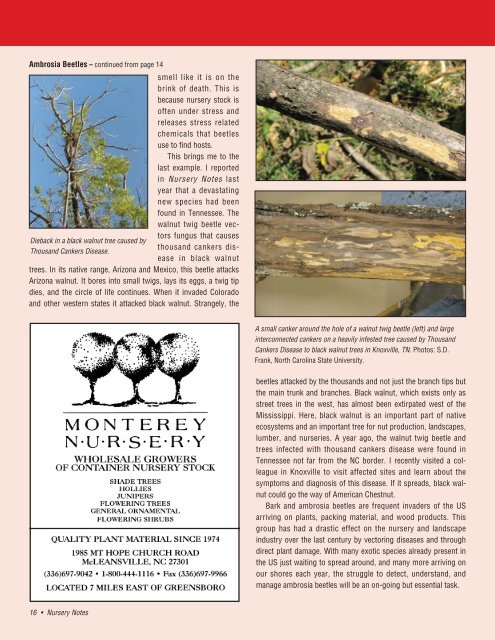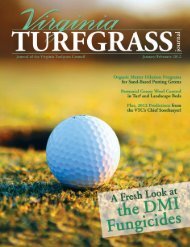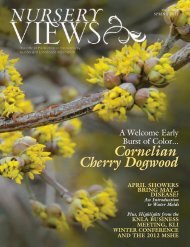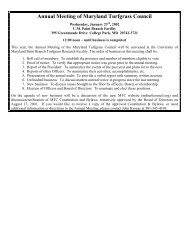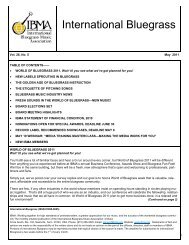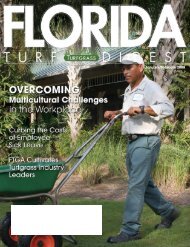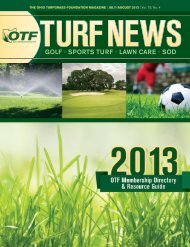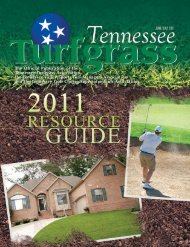Nursery Notes Nov-Dec 2011 - The Paginator
Nursery Notes Nov-Dec 2011 - The Paginator
Nursery Notes Nov-Dec 2011 - The Paginator
You also want an ePaper? Increase the reach of your titles
YUMPU automatically turns print PDFs into web optimized ePapers that Google loves.
Ambrosia Beetles – continued from page 14<br />
Dieback in a black walnut tree caused by<br />
Thousand Cankers Disease.<br />
smell like it is on the<br />
brink of death. This is<br />
because nursery stock is<br />
often under stress and<br />
releases stress related<br />
chemicals that beetles<br />
use to find hosts.<br />
This brings me to the<br />
last example. I reported<br />
in <strong>Nursery</strong> <strong>Notes</strong> last<br />
year that a devastating<br />
new species had been<br />
found in Tennessee. <strong>The</strong><br />
walnut twig beetle vectors<br />
fungus that causes<br />
thousand cankers disease<br />
in black walnut<br />
trees. In its native range, Arizona and Mexico, this beetle attacks<br />
Arizona walnut. It bores into small twigs, lays its eggs, a twig tip<br />
dies, and the circle of life continues. When it invaded Colorado<br />
and other western states it attacked black walnut. Strangely, the<br />
A small canker around the hole of a walnut twig beetle (left) and large<br />
interconnected cankers on a heavily infested tree caused by Thousand<br />
Cankers Disease to black walnut trees in Knoxville, TN. Photos: S.D.<br />
Frank, North Carolina State University.<br />
beetles attacked by the thousands and not just the branch tips but<br />
the main trunk and branches. Black walnut, which exists only as<br />
street trees in the west, has almost been extirpated west of the<br />
Mississippi. Here, black walnut is an important part of native<br />
ecosystems and an important tree for nut production, landscapes,<br />
lumber, and nurseries. A year ago, the walnut twig beetle and<br />
trees infected with thousand cankers disease were found in<br />
Tennessee not far from the NC border. I recently visited a colleague<br />
in Knoxville to visit affected sites and learn about the<br />
symptoms and diagnosis of this disease. If it spreads, black walnut<br />
could go the way of American Chestnut.<br />
Bark and ambrosia beetles are frequent invaders of the US<br />
arriving on plants, packing material, and wood products. This<br />
group has had a drastic effect on the nursery and landscape<br />
industry over the last century by vectoring diseases and through<br />
direct plant damage. With many exotic species already present in<br />
the US just waiting to spread around, and many more arriving on<br />
our shores each year, the struggle to detect, understand, and<br />
manage ambrosia beetles will be an on-going but essential task.<br />
16 • <strong>Nursery</strong> <strong>Notes</strong>


